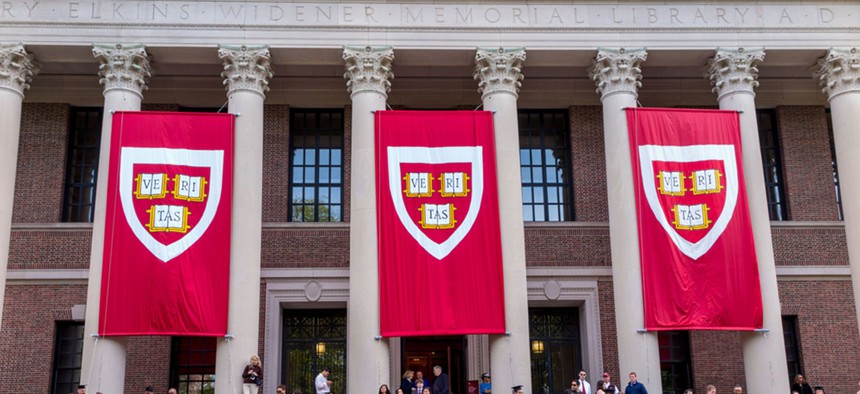
f11photo / Shutterstock.com
Elite Liberal-Arts Colleges Aren't Producing the Highest-Earning Elites
That honor belongs to top-tier research universities.
Last month, President Obama unleashed a barrage of data on U.S. higher education and its outcomes in the form of the Education Department's College Scorecard. The data isn’t meant to be used as a ranking system, but something that prospective students can use to inform their college choice. But because it includes information on loans, earnings, and tuition costs, it can be used to sort schools based on graduates’ average earnings. For example, the Education Department’s blog has compiled a list of 23 schools that are affordable to low-income students but provide high earnings.
A new analysis by The Wall Street Journal of the Scorecard data found that the median earnings of students at nearly half of the most selective liberal-arts colleges in the country was below $50,000, 10 years after graduation. Graduates from top research universities fared better—most earned more than $50,000 at the 10-year mark, with a third making more than $70,000. The dataset has some pretty big caveats for this kind of analysis, though: It doesn’t break earnings down by major, and it only includes graduates who received federal student aid.
Quantifying higher education’s returns on investment is an increasing concern for parents and students, as tuition and student-debt numbers in the U.S. reach unprecedented levels. The College Board found that even though tuition increases have been slowing, the cost of a year of college still rose 3 percentnationally this year.
To some, liberal-arts schools have started to look like unaffordable luxuries. Liberal-arts supporters have pushed back on this capitalistic view of higher education, arguing that the fruits of education aren’t just earnings and job training—it’s supposed to make good citizens.
But with regards to earnings, studies have consistently shown that, for the most part, STEM graduates will earn more. That fits the finding that research universities produce higher-earning graduates than liberal-arts schools. And when it comes to job choice, research has shown that those doing what they like daily are happier. A 2010 study found that the magic number is $75,000—above that salary, people stop reporting increases in happiness.
Of course, money is only part of the equation, and the availability of new data focused on economic outcomes is certainly making it more visible—though probably not making college decisions any easier.
(Top image of Harvard University commencement via f11photo / Shutterstock.com )
NEXT STORY: Improving Engagement Scores Is the Wrong Goal






